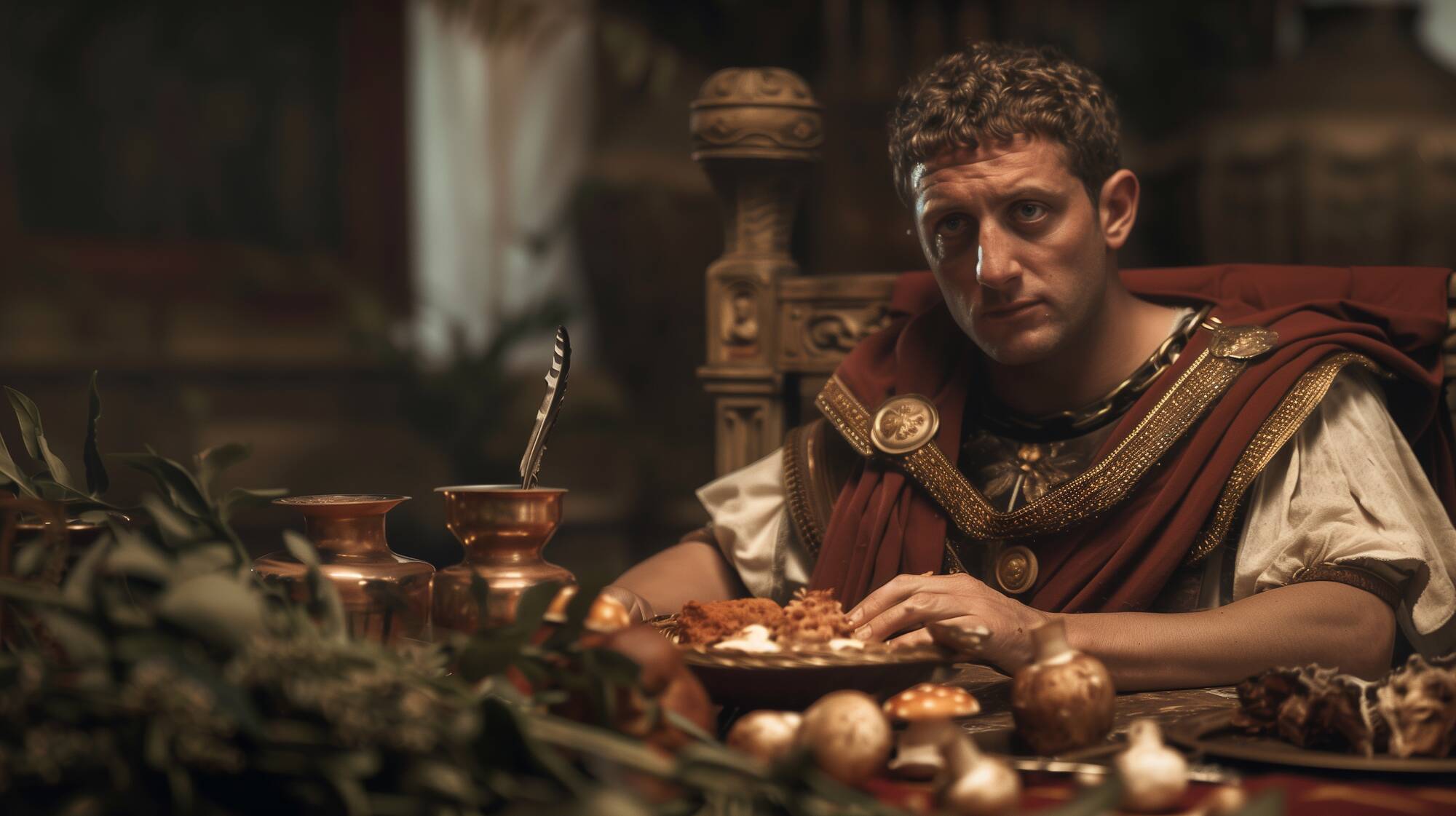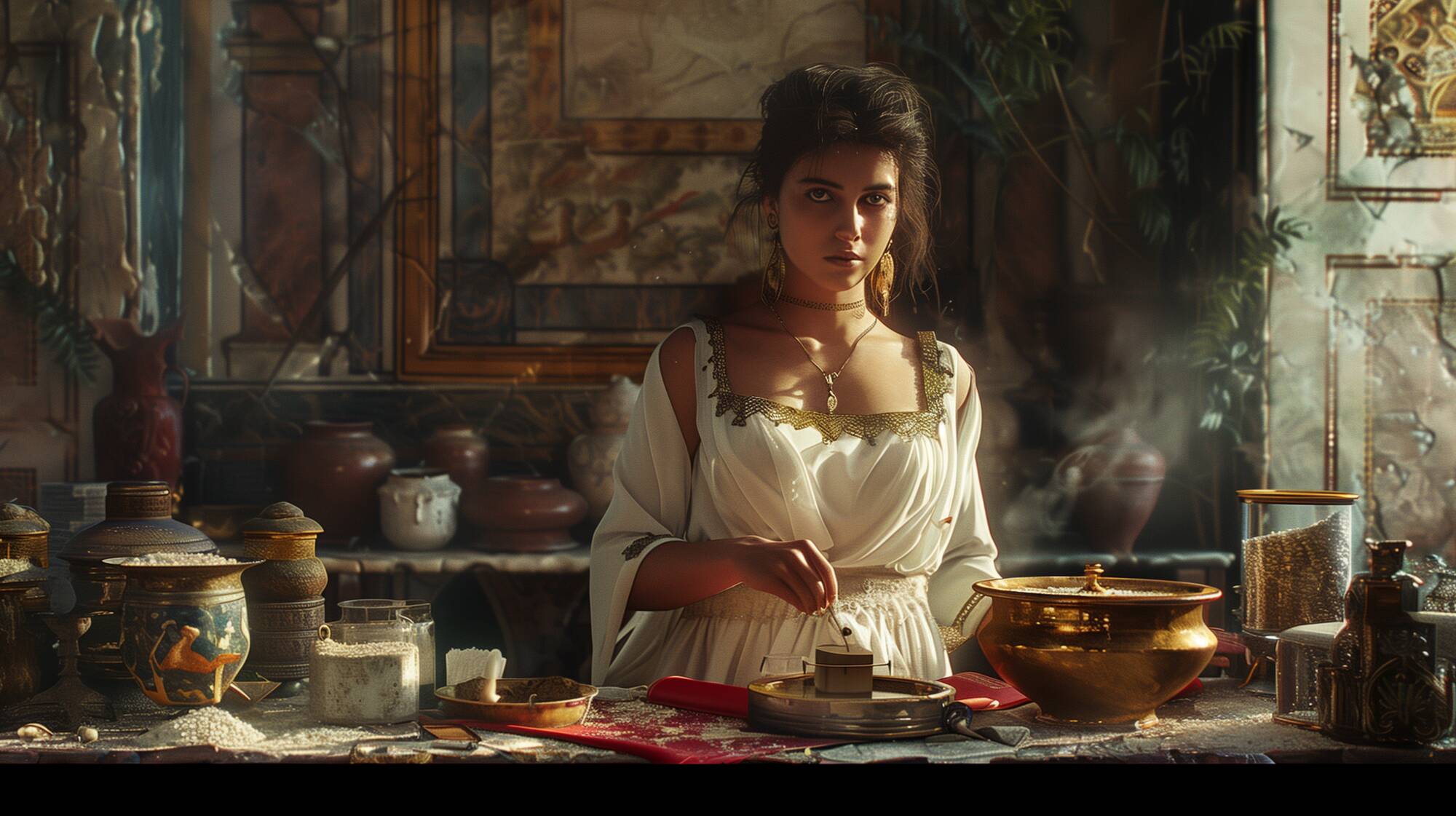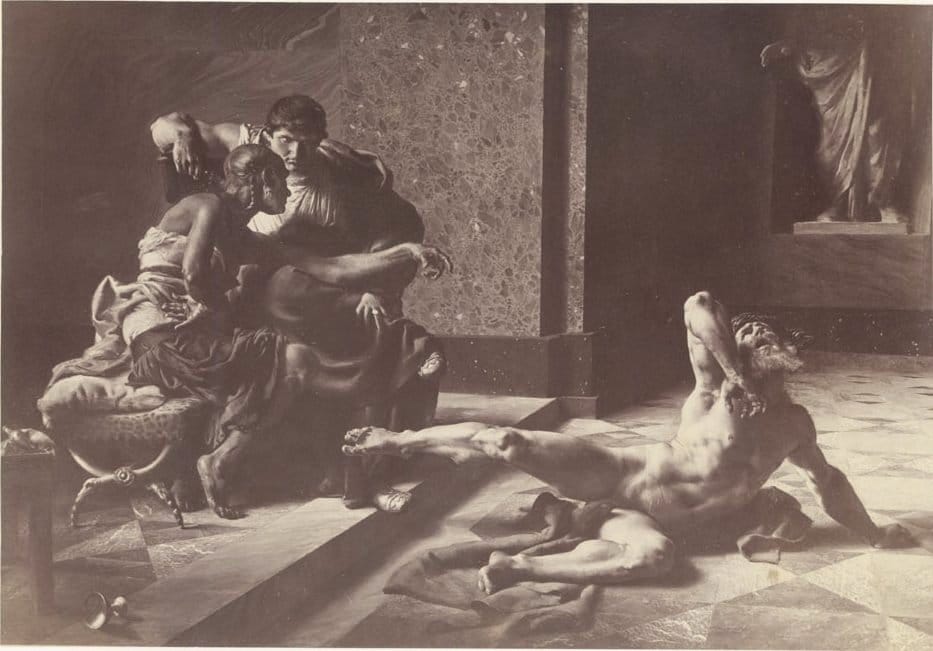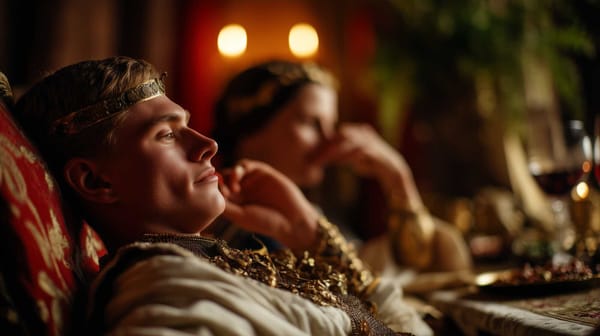Locusta of Gaul: The Imperial Poisoner of Ancient Rome
Locusta was Rome’s most famous poisoner, employed by at least two different emperors, and an empress.

Locusta, also known as Lucusta, who died in 69 AD, was a famed poisoner in the 1st-century Roman Empire, prominent during the last two emperors of the Julio-Claudian dynasty. She is alleged to have been involved in the deaths of Claudius and Britannicus. Favored by Emperor Nero for many years, she was tasked with instructing other poisoners for him. After Nero's demise, Locusta was put to death by his successor, Galba, who ruled briefly from 68 to 69 AD.
Most of our knowledge about Locusta comes from the Roman historians Tacitus, Suetonius, Cassius Dio, and the poet Decimus Junius Juvenalis.
Early Life and Skills
Locusta hailed from Gaul, which encompasses modern-day France and parts of its neighboring countries. Little is known about her early life, but it is evident that she had acquired profound knowledge of herbal properties and toxicology. This expertise caught the eye of the Roman elite, who often used poison as a discreet method to dispatch rivals and consolidate power.
Notable Assassinations
Locusta’s most infamous act was the poisoning of Britannicus, ensuring Nero's position as uncontested ruler. The precision with which she executed this task solidified her fearsome reputation. Historical records suggest that after an initial failure to kill Britannicus, Nero threatened Locusta with execution, prompting her to administer a faster-acting poison the following night.
The second, but still equally important act, was the poisoning of Claudius, making sure that Empress Agrippina‘s plan was a success and Nero was put to the throne of the Roman Empire.

Rise to Notoriety
Locusta’s notoriety as a poisoner reached new heights under the reign of Emperor Nero, one of Rome’s most infamous rulers. Her involvement with the imperial court began during the reign of Claudius when she was implicated in the murder of the emperor, allegedly orchestrated by his wife Agrippina the Younger to ensure her son Nero's ascension to the throne.
AGRIPPINA POISONS CLAUDIUS
"Under this great burden of anxiety, he had an attack of illness, and went to Sinuessa to recruit his strength with its balmy climate and salubrious waters. Thereupon, Agrippina, who had long decided on the crime and eagerly grasped at the opportunity thus offered, and did not lack instruments, deliberated on the nature of the poison to be used. The deed would be betrayed by one that was sudden and instantaneous, while if she chose a slow and lingering poison, there was a fear that Claudius, when near his end, might, on detecting the treachery, return to his love for his son.
She decided on some rare compound which might derange his mind and delay death. A person skilled in such matters was selected, Locusta by name, who had lately been condemned for poisoning, and had long been retained as one of the tools of despotism. By this woman's art the poison was prepared, and it was to be administered by an eunuch, Halotus, who was accustomed to bring in and taste the dishes”.
Cornelius Tacitus, The Annals
Initially, Locusta concocted a poison that would incapacitate Claudius’s guard and food taster by causing severe intestinal distress. With this obstacle removed, she then applied poison to a plate of mushrooms, the favorite dish of Claudius, which he consumed without any reservations.
Despite Claudius's careful nature, which included keeping a feather nearby to induce vomiting if he suspected poisoning, his safety measure was unsuccessful. Locusta simply ensured this, by poisoning the feather as well (specifically atropa belladonna, a common Roman poison).

Imperial Favor and Patronage
Following Claudius’s demise, his son Britannicus was backed by Claudius’s faithful and powerful freedman to take his place. However, Agrippina had already been scheming to have her own son Nero, whom Claudius had adopted, ascend to the throne. According to the historian Suetonius, Nero acted against Britannicus by enlisting the services of Locusta.
Once Nero assumed power, Locusta’s services became even more indispensable. Nero employed her to eliminate political adversaries and anyone he saw as a threat to his reign. Her ability to craft untraceable poisons made her an invaluable asset to Nero. In return for her services, she received protection, property, and even a school where she instructed others in the deadly art of poison-making.
Suetonius writes:
“He attempted to poison Britannicus, as much out of envy because he had a sweeter voice, as from apprehension of what might ensue from the respect which the people entertained for his father's memory. He employed for this purpose a woman named Locusta who had been a witness against some persons guilty of like practices.
But the poison she gave him, working more slowly than he expected, and only causing a purge, he sent for the woman, and beat her with his own hand, charging her with administering an antidote instead of poison; and upon her alleging in excuse, that she had given Britannicus but a gentle mixture in order to prevent suspicion. He commanded the poison to be brought into the eating-room and given to Britannicus, while he was at supper with him.
The prince had no sooner tasted it than he sunk on the floor, Nero meanwhile pretending to the guests, that it was only a fit of the falling sickness, to which, he said, he was subject. He buried him the following day, in a mean and hurried way, during violent storms of rain. He gave Locusta a pardon, and rewarded her with a great estate in land, placing some disciples with her, to be instructed in her trade.”
C. Suetonius Tranquillus, Nero

Downfall and Execution
In AD 68, Senator Gaius Julius Vindex initiated a rebellion against Nero. Although Vindex's immediate efforts did not succeed, the revolt ultimately led Nero to flee Rome when the disgruntled civil and military authorities appointed Servius Galba as the new emperor.
After discovering he had been tried in absentia and declared a public enemy, Nero took his own life. However, Sulpicius Severus suggests that Nero may have had help in ending his life, possibly from a loyal follower like his private secretary, Epaphroditos.
Following Nero's demise, Galba targeted those associated with him, including Locusta. Cassius Dio records that Galba took strict measures against Nero's affiliates, stating: “Helius, Narcissus, Patrobius, Locusta, the sorceress, and others of the scum that had come to the surface in Nero’s day, he ordered them to be led in chains throughout the whole city and then to be executed”.
Suetonius records the dramatic response of Nero to these events:
“On the arrival of the news, that the rest of the armies had declared against him, he tore to pieces the letters which were delivered to him at dinner, overthrew the table, and dashed with violence against the ground two favourite cups, which he called Homer’s, because some of that poet’s verses were cut upon them."
After this outburst, Nero took a lethal dose of poison from Locusta, which he stored in a golden box. He then retreated to the Servilian gardens. From there, he sent a trusted freedman to Ostia with instructions to prepare a fleet, indicating his plans to escape.
Locusta’s fate was sealed after Nero’s suicide and the subsequent fall of his short-lived dynasty. With the change in regime, her imperial protections vanished. Recognized as a symbol of the corruption and excesses of Nero’s reign, Locusta was executed by Emperor Galba in the late 1st century AD as part of his efforts to restore moral order and justice in Rome.









About the Roman Empire Times
See all the latest news for the Roman Empire, ancient Roman historical facts, anecdotes from Roman Times and stories from the Empire at romanempiretimes.com. Contact our newsroom to report an update or send your story, photos and videos. Follow RET on Google News, Flipboard and subscribe here to our daily email.
Follow the Roman Empire Times on social media: